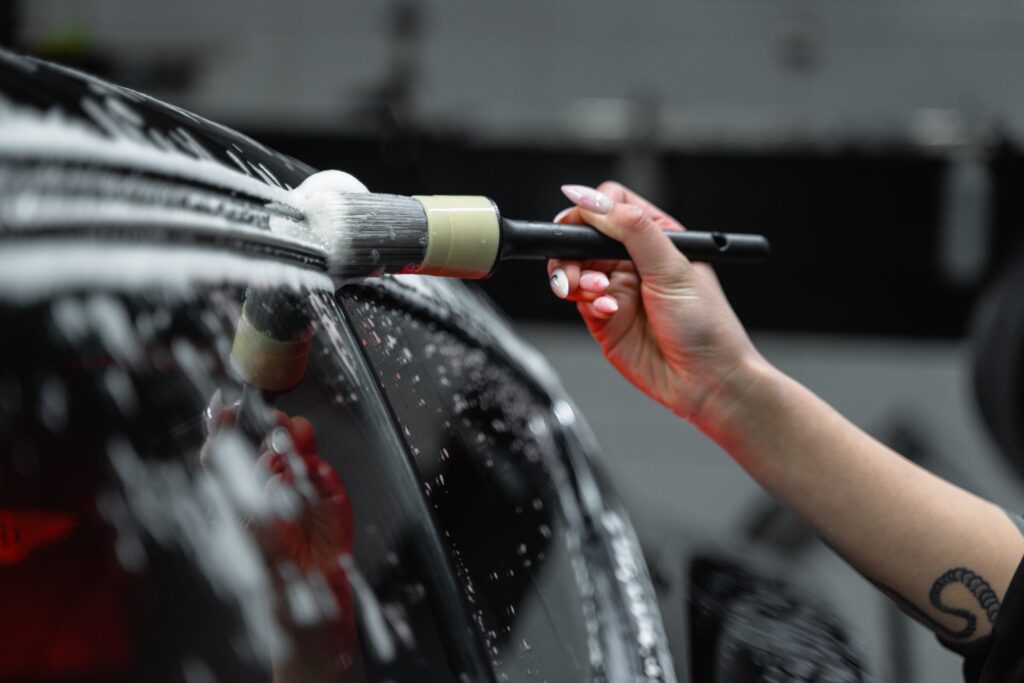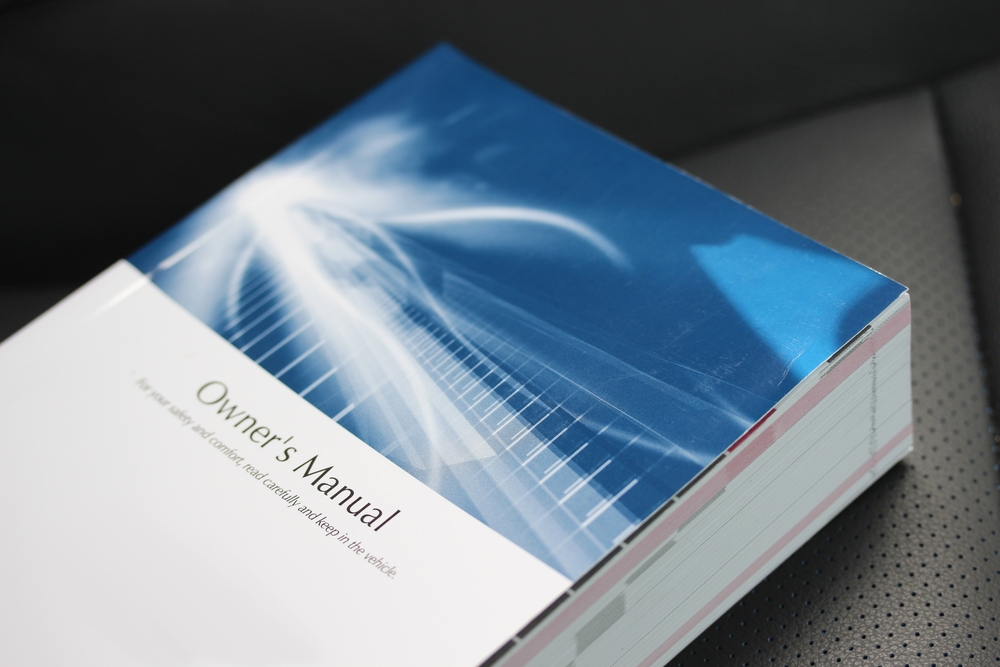Learn how to clean car trim like a pro! Discover the types of car trims, essential tools and products needed, step-by-step guide, tips and tricks, and the benefits of maintaining your car’s trim.


How to Clean Car Trim, From Plastic To Chrome, And Aluminum
When it comes to maintaining the appearance of your vehicle, cleaning the exterior car trim is often overlooked. However, car trim plays a crucial role in protecting and enhancing the overall aesthetics of your vehicle. From window trims to door trims, bumper trims to wheel well trims, keeping them clean and maintained can improve the overall look of your car.
We will go over the world of cleaning exterior car trim, understanding the types of car trims, the tools and products needed for cleaning, a step-by-step guide on how to clean car trim, tips, and tricks for maintenance, and the benefits of having clean car trim. So, let’s dive in and learn how to clean your car trim to shine and sparkle!
Understanding the Types of Car Trims
There are several types of exterior car trims that can be found on vehicles. Here are some common examples:
- Bumpers
- Grilles
- Door handles
- Window trim
- Side mirrors
- Wheel arches
- Spoilers
- Trim strips
- Fender flares
These examples are just a small selection of the numerous exterior car trims that can be found on vehicles. These trims come in many different types, including chrome, blacked-out, or body-color trims, among others. While some trims are purely cosmetic, others may serve a functional purpose, such as protecting the car from scratches or improving aerodynamics. The specific trims on a car will vary depending on the make and model.
Identifying Your Car Trims
Identifying the type of car trims on your vehicle is relatively easy. You can start by visually inspecting the different parts of your car, paying attention to areas where trims are typically located. Most car trims are labeled or have distinct characteristics that can help you identify them. You can also refer to your car owner’s manual or do a quick online search to determine the types of trims on your specific car make and model.


What You Need to Clean Car Trim
Before you start cleaning your car exterior trim, it’s essential to gather the necessary tools and products to ensure a thorough and effective cleaning process. Here are the things you’ll need:
Tools required to clean car trims
- Soft-bristle brush or toothbrush
- Microfiber or soft cloth
- Plastic or vinyl trim tool (optional)
- Water hose or bucket of water
- Drying towel or chamois
Products that can clean and restore car trims
- Mild car soap or automotive trim cleaner
- Plastic or vinyl trim restorer or protectant
- Chrome or metal polish (if applicable)
- Rubber or vinyl conditioner (if applicable)
Safety precautions to take before cleaning car trims
- Park your car in a well-ventilated area or outdoors to avoid inhaling fumes from cleaning products.
- Wear protective gloves and goggles to protect your hands and eyes from potential hazards.
- Follow the instructions on the product labels for safe and proper use.
- Avoid excessive force or aggressive scrubbing that can cause scratches or damage to the trim surface.
- If using a trim tool or other sharp objects, be cautious not to scratch or gouge the trim or other parts of the car.
Step-by-step Guide on How to Clean Car Trim
Now that you have gathered the necessary tools and products and taken the safety precautions, here is a step-by-step guide on how to clean your car trim.
Pre-cleaning preparation
- Park your car in a shaded area or avoid cleaning under direct sunlight to prevent premature drying of cleaning products.
- Wash your car thoroughly to remove any dirt, grime, or debris that may be on the car trim. Use a mild car soap or automotive trim cleaner and a soft-bristle brush or toothbrush to gently scrub the trim surface.
- Rinse off the soap or cleaner with a water hose or a bucket of clean water.
- Dry the car surface, including the trim, with a clean microfiber or soft cloth to prevent water spots or streaks.
Cleaning the car trim
- Apply a small amount of mild car soap or automotive trim cleaner onto a soft cloth or brush and gently scrub the trim surface. Avoid using excessive force or abrasive materials that can cause damage.
- Pay extra attention to areas with stubborn dirt, grime, or stains, and use a plastic or vinyl trim tool (if necessary) to gently scrape off the residue.
- Rinse off the soap or cleaner with a water hose or a bucket of clean water.
- Dry the trim surface thoroughly with a clean microfiber or soft cloth.
Drying the car trim
After cleaning, make sure to dry the car trim drying marks or water spots from forming. Use a clean microfiber or soft cloth to dry the trim surface thoroughly. If necessary, you can use a separate dry cloth to buff the trim to a shiny finish.
Tips and Tricks for Cleaning and Maintaining Car Trim
To keep your car trim looking its best and to ensure its longevity, here are some helpful tips and tricks for cleaning and maintaining car trim.
How often to clean the car trim
It is recommended to clean your car trim at least once a month to prevent dirt, grime, and stains from building up and causing damage over time.
However, if your car is exposed to harsh environmental conditions or notices any signs of damage or discoloration, you may need to clean your car trim more frequently.
How to fix damaged or discolored trim
If you notice any damaged or discolored areas on your car trim, it is essential to address them promptly to prevent further damage.
For minor scratches, you can use a plastic or vinyl trim restorer or a specialized trim restoration product to restore the color and shine of the trim.
For more severe damage, such as deep scratches or cracks, it may be necessary to seek professional help or replace the damaged trim.
How to maintain car trim cleanliness
After cleaning your car trim, you can apply a protectant or trim dressing product to help maintain its cleanliness and protect it from UV rays, oxidation, and environmental damage.
Regularly inspect your car trim for any signs of damage, discoloration, or buildup, and address them promptly to prevent further damage.
Avoid parking your car under trees or in areas with heavy vegetation to prevent sap, bird droppings, or other environmental contaminants from settling on your car trim.
Commonly asked questions
How To Clean Oxidized Aluminum Car Trim?
Aluminum car trim can become oxidized over time due to exposure to the elements like sun, water, and air. If left untreated, the trim can look dull and unattractive. However, cleaning oxidized aluminum car trim is a simple process.
First, clean the trim with soap and water to get rid of any dirt or grime. Then, use a specialized aluminum cleaner and apply it to the affected areas. Allow the cleaner to sit for a few minutes before scrubbing the trim lightly with a soft-bristled brush or a microfiber towel. After that, rinse the trim with water and dry it off with a soft cloth.
Remember to wear gloves and eye protection while cleaning the aluminum trim because the cleaners can be corrosive. With a little patience and effort, your car’s aluminum trim can look as good as new.
How To Clean Black Trim?
Cleaning black car trim is important to maintain the appearance of your vehicle. Start by washing the trim with gentle soap and water to remove any dirt and grime. Avoid using harsh chemicals or abrasive cleaners that can damage the finish.
Once the trim is clean and dry, apply a plastic trim restorer or a black plastic dressing to restore the color and shine. Use a foam applicator or microfiber towel to spread the product evenly and work it into the surface. Be sure to cover all areas of the trim and avoid getting it on the paint or glass.
Finally, buff the trim with a clean towel to remove any excess product and achieve a smooth, polished finish. Repeat this process as needed to keep your black car trim looking like new.
Conclusion
In conclusion, cleaning your car trim is an essential part of car maintenance that should not be overlooked. Understanding the types of trims on your car, gathering the necessary tools and products, and taking safety precautions are crucial for a successful cleaning process. By following the step-by-step guide and tips and tricks provided in this article, you can keep your car trim looking its best and ensure its longevity. Regular cleaning of your car trim can enhance the overall aesthetics of your vehicle and protect it from potential damage, making it a worthwhile investment of your time and effort


For a full guide on Car Detailing, Check out my article: Ultimate Beginner’s Guide: How To Detail a Car in 13 steps for a Pro-Level Shine
Can I use any household cleaner to clean my car trim?
It is not recommended to use household cleaners, especially those containing bleach or abrasive substances, as they can damage the finish of your car trim. It’s best to use specialized car trim cleaners that are designed to be safe and effective on automotive trim materials.
How often should I apply trim protectant or dressing?
The frequency of applying trim protectant or dressing depends on the product you use and the environmental conditions your car is exposed to. As a general guideline, you can apply trim protectant or dressing every 2-3 months or as recommended by the product manufacturer.
Can I use a regular cloth or towel to dry my car trim?
It’s best to use a clean microfiber or soft cloth specifically designed for automotive use to dry your car trim. Regular towels or cloths may scratch or damage the trim surface, especially if they have abrasive fibers or debris trapped in them.
